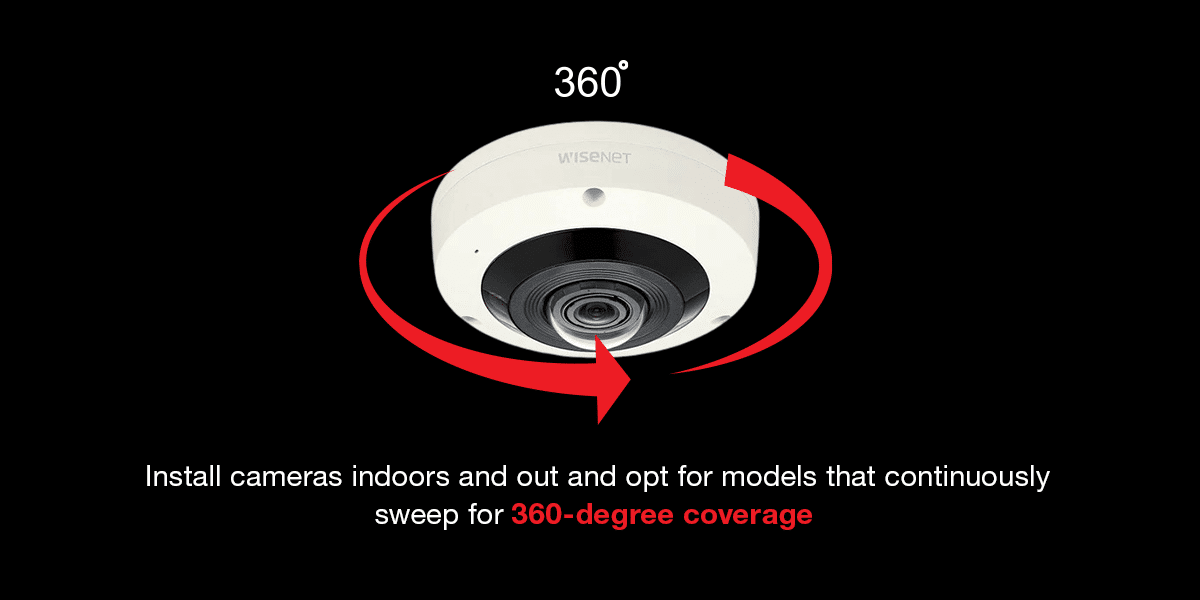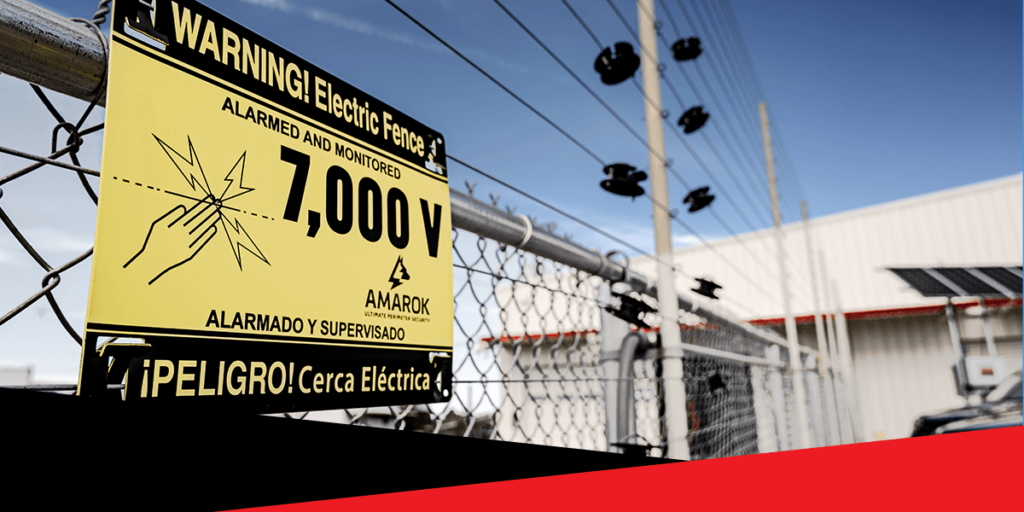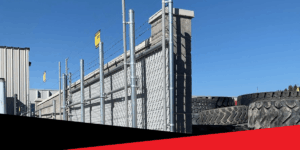Data — especially sensitive, confidential, and personally-identifying information — has become currency for criminals in an increasingly digital world. Because data is a valuable business asset, ensuring its integrity, availability, and accessibility is crucial for day-to-day operations and legal compliance.
Data centers are a practical way to help reach these goals, as they provide off-site information storage and strong cybersecurity. Yet, your security strategies must go beyond the digital space since you’ll incur the same penalties whether the breach occurred online or in person. As a result, these sites require effective physical security for optimal protection against data theft. Familiarizing yourself with the following best practices will help you design the right physical security approach for your facility.
1. Implement Multilayered Access Control
Data center physical security relies on controlling access to and within your property. You can implement various solutions at your perimeter and interior entrance points to different zones to help prevent unauthorized access. Doing so at multiple points enables you to discover where gaps may exist so you can quickly adapt your strategy as needed.
One of the main points to secure is your building’s doorways. Making entries accessible only through credentials or manned security stations helps ensure that only authorized parties pass through. Consider solutions like key fobs, badge readers, or keyless entry systems requiring a code. Cameras that capture who is coming and going also provide extra confidence.
More complex security is necessary for your data center’s most sensitive areas. Secure these with advanced options like biometric readers and multifactor authentication for better protection against unauthorized access.
2. Deploy Video Surveillance

Video surveillance cameras offer real-time visibility into property activity. Opt for models that continuously sweep for 360-degree coverage and install cameras indoors and outdoors.
This approach enhances physical security for data centers by providing:
- Around-the-clock protection: When your facility operates 24/7/365, your security strategy has to as well. Cameras provide real-time feeds around the clock, allowing your team to monitor nonstop and immediately respond to threats.
- Dual verification: Many jurisdictions require dual verification of an attempted breach before they deplore law enforcement. A video surveillance system helps meet these requirements by visually confirming the activity.
- Legal documentation: A video record of an intruder helps law enforcement identify and capture criminals. Cameras also provide powerful evidence to use against thieves in court or support insurance claims.
- Defense against insider threats: Potential profit from data doesn’t just tempt outsiders — employees and vendors may find it challenging to resist too. A video surveillance system monitors everyone in the facility to safeguard against insider threats.
- Real-time archiving: Cameras make attractive targets for thieves, whether they’re looking to damage or steal them. Real-team archiving ensures footage remains available if a criminal disables or takes the equipment.
3. Enforce Access Logging and Monitoring
Logging and monitoring access to the facility and areas within is vital for data center security. This practice provides a more complete story about how those with access are using — or misusing — their privileges. As a result, this approach is most effective for detecting and minimizing insider threats.
Establish logging at each property and building entry point. It’s also best practice to do the same for sensitive indoor areas like server cages to prevent unauthorized access. Appoint a designated supervisor or team to oversee specific points and capture every entry and exit in an electronic system.
These logs form an electronic trail for auditing and analysis. Careful, regular review of your reports lets you benchmark normal activity in your data center. By understanding those patterns, you can more quickly detect unusual and potentially criminal behavior and respond to it sooner.
As part of this process, you can also record asset movement by capturing who is bringing or removing what equipment and when. Extending physical security to equipment helps reduce the risk of costly losses from internal theft.
4. Employ Security Personnel
Visible guards can also show that you prioritize your data center security. Experienced guards often have the skills to help with:
- Patrolling and monitoring your property: When guards vary their routes and timing, regular property patrols can help deter attempted breaches. Guards can also visually monitor the property through video surveillance and respond quickly to alerts.
- Controlling grounds and facility access: Guards stationed at the property and building entry points can verify access authority and stop social engineering techniques like tailgating.
- Identifying suspicious behaviors: With the right training, guards can spot red flags that may indicate pending criminal activity and intervene to prevent it.
- Responding to incidents: If a breach occurs, guards can act immediately. They can also provide extra support and safety during an emergency.
- De-escalating tense situations: Security guards frequently undergo training in communication and de-escalation techniques to help defuse tense situations.
While employing guards offers many benefits, it’s important to remember that best practices include having multilevel, proactive strategies. That means guards are most effective as part of a more comprehensive and balanced approach. Use them to enhance perimeter fencing, video surveillance, and other security measures rather than as a stand-alone solution.
5. Enhance Perimeter Security
As with cybersecurity, a multilayer approach is the most successful at preventing breaches. This approach begins at your perimeter with strategic solutions to stop unwanted property access.
Today’s data center perimeter security solutions are often multifaceted, but physical security barriers remain an effective first line of defense. Fences help obstruct unauthorized entry and provide a visual deterrent against temptation. While many options are available, electric fencing solutions outperform traditional styles. These fences deliver would-be criminals a memorable but legal and medically safe shock when they attempt to breach the barrier.

Modern security fences for data centers also integrate seamlessly with other proactive approaches for a 360-degree solution. You can add video surveillance, intimidating lights and alarms, and bollards for multilevel protection. Remote 24/7 monitoring ensures trained experts watch over your property day and night for greater confidence against a breach.
6. Implement Intrusion Detection
Building intrusion detection systems are an effective solution to safeguard internal structures against unauthorized access. These systems form an extra layer of data center security, with separate alarms and sensors for more vulnerable points.
Deploy intrusion detection technology at exterior doors and windows where an intruder may attempt to gain access. These tools are also practical for your most critical interior enclosures, like server cages and cabinets, rack rooms, and equipment storage closets. Once armed, the sensors trigger an audible alarm as soon as their circuit is broken. Your team members receive instant notification of the potential breach so they can immediately take action.
Intrusion detection systems also often include motion sensors that proactively warn against a breach attempt. They offer intelligent programming to send alerts when someone approaches the protected structure or entryway. This early detection empowers you to react faster, improving the chances of completely stopping the intrusion.
Intrusion detection systems also integrate with other physical security strategies, like video surveillance cameras and alarm systems.
7. Manage Visitor Access
Ideally, you’ll always know who’s visiting your property on a given day — but for many businesses, that’s not a reality. Supply deliveries can arrive a day or two earlier than indicated. Employees could forget meals or essential medication and need a drop-off, or equipment may require unexpected maintenance and repair. When you add regular deliveries and colocation client tours to the mix, you have a lot of people coming and going.
Any visitor, whether scheduled or not, could be intent on compromising and profiting from your data. To prevent that outcome, it’s necessary to design a strategy to manage their access and supervise their activities. Follow these best practices to strengthen data center physical access security for visitors:
- Direct all deliveries, including unscheduled drop-offs, to a secure, video-monitored receiving location.
- Install visitor-only restrooms in your reception area to limit entry to other facility spaces.
- Allow only high-level employees to authorize visits or require two or more employee authorizations from lower-level personnel.
- Develop a process for verifying the visitor’s authority to enter, confirming their identification, and logging their entry and exit.
- Require visitors to surrender all personal electronic devices if they’re accessing areas beyond reception.
- Provide temporary badges that clearly display their name, status as a visitor, and employee authorizing access.
- Define which parts of the building potential clients can physically enter and exclude access to highly sensitive areas.
- Escort all visitors, including authorized contractors, throughout their presence on the property.
- Have visitors turn in temporary badges and retrieve personal items when they sign out.
- Implement a process for controlling temporary badges, such as inventorying them at the beginning and end of each shift.
8. Maintain Environmental Controls
People aren’t the only threats to physical security in data centers. Environmental factors can also impact information access, integrity, and availability.
For example, a fire in the facility can cause water, heat, and smoke damage to critical technology infrastructure like servers. A power loss can corrupt files, disrupt transmissions and disable crucial protections. Similarly, prolonged exposure to extreme temperatures and excessive humidity can interfere with proper equipment function.
Static electricity is another primary environmental concern resulting from environments that are too dry. Unwanted buildup can easily lead to electrostatic discharge (ESD). ESD can cause data corruption and loss and hardware damage. Discharges can also render communications inoperable by “frying” sensitive microcomponents with a jolt of electricity.
Any of these events could result in a higher breach possibility, whether digitally or by a thief on foot. Mitigate these risks and maintain stronger data center security by implementing environmental controls such as the following:
- Install sprinkler systems and fire extinguishers at strategic points across the facility.
- Invest in temperature and humidity monitoring and control solutions.
- Ensure backup power sources are available and ready to operate when needed.
- Install static-control carpet, rubber, or vinyl flooring.
9. Establish Redundant Systems
Many industry regulations require business continuity and disaster recovery plans, such as FINRA’s Rule 4370 for investment service providers. As part of these plans, organizations must take reasonable measures to protect against operational disruption. That includes ensuring data access amid an emergency. It’s too late to plan for physical security during such an event, reinforcing the need for proactive protection strategies.
Redundant systems rank among data center security best practices to reach this goal. This solution involves backing up all data to another off-site location unlikely to be affected by the same risks. For example, a Florida facility facing a hurricane may back up to locations in California, Kansas, and New Jersey. Similarly, a West Coast facility might establish redundancy in other areas to mitigate operation-disrupting earthquake risks.
The multiple copies of uncorrupted data at another location allow for faster transmission rerouting. IT personnel can quickly direct network traffic to alternate resources, maintaining data access for critical tasks.
Modern business relies on consistent data availability to power operations, so it’s essential to extend redundancy to all system components. For example, keep extra servers on hand and ready to deploy if one malfunctions or needs maintenance. Experts typically recommend one or two spares for each vital network part for maximum protection.
10. Conduct Regular Audits, Updates, and Training
No matter how solid a strategy may seem at the outset, there may be gaps and oversights. Savvy and determined criminals count on pinpointing and exploiting these vulnerabilities. Implementing regular audits can help you identify those opportunities to strengthen your physical security.
Start by detailing all the components of your multilayer security approach to uncover where risk may lie. Then, develop your unique data center physical security checklist of proactive steps for reducing those risks. Some examples include:
- Establishing routine maintenance and testing plans for video surveillance and building intrusion detection systems.
- Deploying software patches to systems like electronic access control devices and badge readers immediately upon receipt.
- Scheduling and carrying out regular alarm testing.
- Creating and following a timetable for testing backup components and disaster recovery plans.
Remember staff as you develop your blueprint since humans can be the weakest link in any security posture. It’s wise to implement measures such as the following:
- Consider regular employee education to boost awareness of potential breach techniques and confidence in handling an incident.
- Remind employees you’ve invested in a multilayered security strategy, the consequences of violating protocols, and your commitment to enforcing them.
- Apply the principle of least privilege to physical security by giving staff access only to areas necessary to their responsibilities.
- Review and update access credentials when a team member changes roles.
- Revoke access privileges and deactivate any key fobs or badges immediately upon employee termination.
Take Your Data Center Physical Security to a New Level With AMAROK
AMAROK has a history of real-world success as a trusted partner for proactive, comprehensive, multilayered data center security solutions that work. Our innovative approach allows us to collaborate with you to create a customized, cost-effective approach to 360-degree security. We provide our systems through a unique subscription-based model, so there are no installation, maintenance, or repair costs.
Let’s talk about how we can deliver ultimate protection for you. Find your local AMAROK security expert or reach out to us online to get started today!




